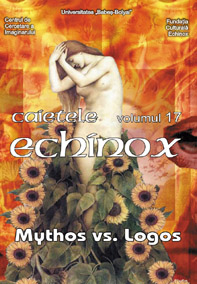Un langage cratyléen : La couleur dans la mythologie moderniste
A Cratylean Language: Color in Modernist Mythology
Author(s): Rodica IlieSubject(s): Literary Texts
Published by: Universitatea Babeş-Bolyai
Keywords: Stéphane Mallarmé; Ezra Pound; Imagism; Impressionism; Poetics of Color; Epiphany.
Summary/Abstract: The present study focuses on the introduction of a new mythology of poetic modernism by means of colors and words. If desacralization, as a symptom of the eighteenth and nineteenth centuries, led to what Jean-Luc Nancy defines as “the interrupted myth” (La communauté désœuvrée, 1990), Mallarmé and the Impressionists, and then Sensationism (Fernando Pessoa), the English Imagists (Ezra Pound), Futurism, Abstractionism, Expressionism, Suprematism, regained and imposed new artistic codes, new myths in which colour became the support, the instrument and the universal Cratylean language. Our aim is to define the relations between the modalities of sign motivation in Mallarmé’s and Pound’s poetry, critically considering Bachelard’s perspective on the metaphysics of silence or Hugo Friedrich’s view, emphasizing the “empty transcendence” of the French modernists, substituting these interpretations for the epiphanic values of white, beyond the values of negativity, of Mallarmé’s suicidal aesthetics, and drawing on the theory of suggestion which Imagism regained in Ezra Pound’s inspired expression. Literature is based on an ekphrastic way of realization in which color ideographically contains the epiphany, owns the mystery, the essence and the transparency of the origin myth, of the recreation of the world. As for Turner or Monet, color becomes a constructive principle with an inaugural value of cosmic structuration. Beyond the poetics of simplicity (Hannes Böhringer, 2000), for Poetic Modernists and Impressionists, color represents the way of fostering a philosophical edifice, a metaphysical category (for Mallarmé, color fosters “the mystery in the letters”, contains the silence, the absolute, the mourning, as well as the perfection). For Ezra Pound, it supports the apparition of a genesis in daily life, maintains the logopoetical game, the philosophy of composition and of the imposition of a transfer language, not only a cultural grafting (Guy Scarpetta, Eloge du cosmopolitisme, 1981), but a universal language. The methodology of the present study is based on reception theory, on the hermeneutics and philosophy of the image, and on the comparative approach, specific to cultural anthropology and to imagination studies (J-J. Wunenburger, [2001]).
Journal: Caietele Echinox
- Issue Year: 2009
- Issue No: 17
- Page Range: 171-180
- Page Count: 10
- Language: French
- Content File-PDF

